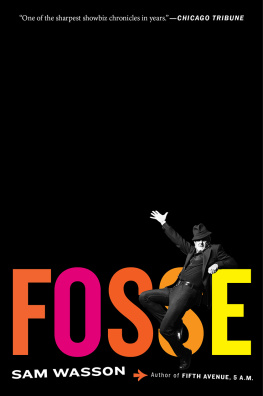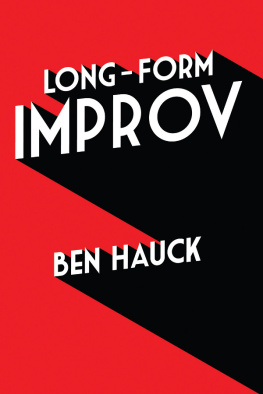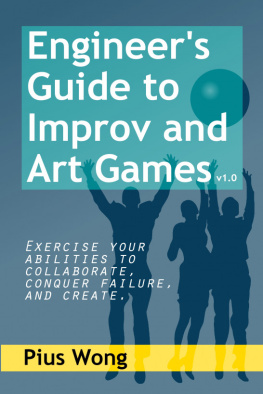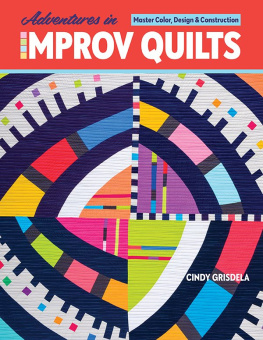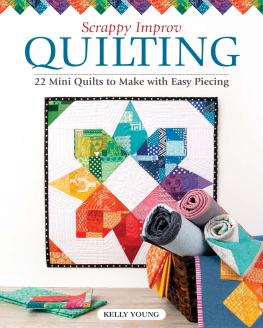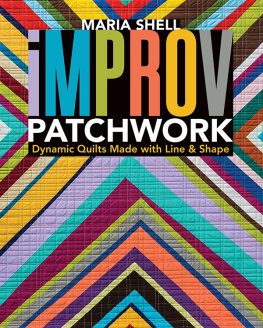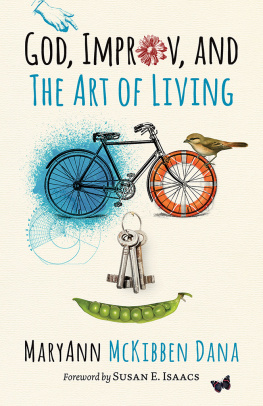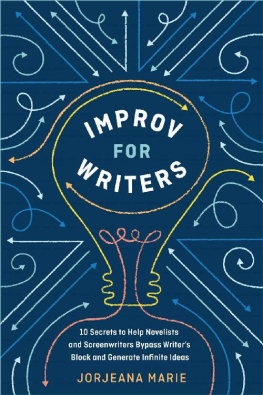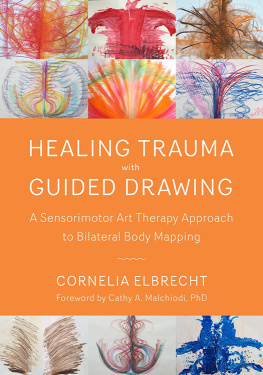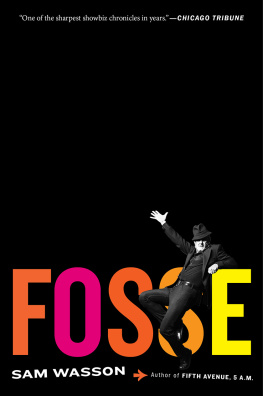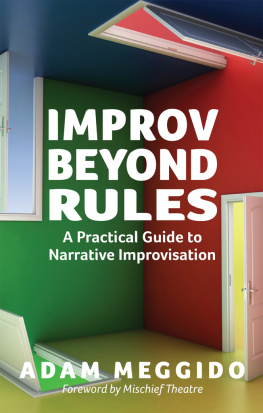Copyright 2017 by Sam Wasson
All rights reserved
For information about permission to reproduce selections from this book, write to or to Permissions, Houghton Mifflin Harcourt Publishing Company, 3 Park Avenue, 19th Floor, New York, New York 10016.
hmhco.com
Library of Congress Cataloging-in-Publication Data is available.
ISBN 978-0-544-55720-8
Cover design by Houghton Mifflin Harcourt
Cover illustration courtesy of Second City of Chicago
Author photograph Gary Copeland
e ISBN 978-0-544-55825-0
v1.1117
For
Jeffrey Wasson
Cindy Wasson
Sophie Wasson
Andrea Martin
Bob Dolman
Jack Dolman
Joe Dolman
Ours is the only modern country which is in a state of permanent revolution.
Harold Clurman, The Fervent Years: The Group Theatre and the Thirties
Hi, How Are You?
No one had any idea this would happen. Improvisational theateras created in the early twentieth century by a young settlement worker, Viola Spolin, to foster self-expression and interaction among immigrant children; then developed by the young artists and intellectuals of the University of Chicago; then urged on by Mike Nichols and Elaine May into an expression of psychological healing and liberation; then urged on further into visionary presentational forms by director Paul Sillswas laughed into what we call improv comedy, or improv, for short, completely by accident. None of these giants set out for laughs, yet somehow we owe them Second City, Alan Arkin, Bill Murray, Tina Fey, The Graduate, Saturday Night Live, Waiting for Guffmanyou name it.
The commerce, practice, and eventual art of improv comedy were themselves improvised. And why not? Many have surmised that improvs origins date back centuries, to commedia dellarte. I dont agree. Nor do I believe it was always there. Like anything else, improvisation had to be inventedand it was invented, in America, by young, mostly middle-class amateurs, performers, and producers who, in the true spirit of the form, were making it up as they went along. Sounds crazy at best, stupid at worst, and definitely not like the foundations of a sensible commercial or creative enterpriselet alone an entire industry and Americas farthest-reaching indigenous art form, which is what improv comedy has become. As youll soon see, no one in this story expected that to happen.
But I think thats partly why people went to see and be a part of it, returned for more, and keep coming back. They cant believe it. They cant believe anyone, sane or insane, would risk that kind of public humiliation. And when improv really hits the heights, they really cant believe it. No way, youll hear over your shoulder. They must have written that. They couldnt have just made it up! On those nights, its like watching a magic trick, but while a magician always knows more than the audience, improvs magic is just as mysterious to its improvisers. Its a special form that says, Even though youre down there and were up here, were discovering this together.
We all of us can identify with the improvisers predicament, the terror of not knowing what to say or do when all eyes are on you. That right there is a human drama on its own, and its really happening to real people, right in this moment.
And if youre there in the room, youll likely realize that the deepest, most explosive laugh, the painful, blinding gasping for breath that has you physically bracing yourself on something solid so you dont fall over, is the laugh that erupts from the spontaneous materials of real time, in real life.
This is improvisation, the First Amendment in action. In improv venues across America, speech is, theoretically, as free as its going to get; free of pop culture conventions and political correctness, free of the watch-what-you-do-because-its-written-in-stone inhibitions of everything published in print or online. In improv, nothing is written in stone. Its kind of like fireworks, Del Close, one of its foremost innovators, once said, the most ephemeral of art forms. Once its gone, its gone, baby. Theres the afterimage for a few seconds, but nobody will ever see anything like it again.
The impact this ephemeral art form has had on popular entertainment, beginning with the opening of Second City in 1959, is undeniable. Since then, the number of leading comedy artists who rely on improvisational techniques has grown exponentially. America in midcentury had only one, two, or three improv comedy theaters operating at a given moment, and only in Chicago, St. Louis, and New York. Today you can see improv in practically every big city and on every college campus in the country. Burgeoning and proliferating, meme-like, from a dingy avant-garde theater outside the University of Chicago all the way to The Colbert Report, improv has replaced jazz as Americas most popular art.
This is the story of that proliferation, of improv comedys fifty-year ascent from performance technique to popular entertainment to formally and emotionally complex art to philosophy of beingand all of it as American as democracy. For improvisation isnt merely an analogue for democracy, it is democracy, demanding that its individual players and audience members uphold the democratic ideal of total collaboration, of hearing and being heard, and rewarding both sides with the very good feeling of shared humanity.
This book about democracy in comedy is not in itself egalitarian, insofar as it does not consider the life and art of every single improviser who has ever improvised. ManyI hope not too manyhave been left out or scaled down. A better strategy than holding up an all-encompassing mirror, I decided, would be to chart the high points, to tease out the grander story of improvs invention, cultural dissemination, and artistic development, and portray the changing circle of improvisers who kept making history happen.
Who knows what the next chapter will be? A significant change at this point in improvs history is that we know now there will be a next chapter. We didnt always. For its first decades, the Second Citythe worlds longest-running and most successful improv and comedy theaterwas always on the verge of shutting down. Its founders, better intellectuals than businesspeople, struggled to negotiate the rough waters of changing tastes and commerce; its leading improvisers, once discovered, were forever leaving for Hollywood and New York; its critics, thinking they had seen it all, got used to denigrating popular improv as on a level with mediocre sitcomsor worse, as jokey. It was only in the last decades of the twentieth centuryafter Del Close and Charna Halperns iO (formerly ImprovOlympic) shook up the Chicago scene, Andrew Alexander and his team of producers re-improvised old standards of Second City comedy, and the new run of luminaries from Chris Farley to Tina Fey, the first generation to come of age in a culture made by improvisation, infiltrated the establishmentthat improvs financial and creative stations, a half-century after Viola Spolin first asked for an audience suggestion, were finally secured. My book ends there, but its story is still a work in progress. I leave it to someone elseto you, to everyone, reallyto write the next installment. And I do mean you, whoever you are. Because as any experienced improviser will tell you, every audience member watching the show is improvising too.
We the Jews
19401968
1
19401955
Imagine Viola Spolin, the mother, the Jewish mother, Paul Sillss mother, Tina Feys spiritual grandmother, the mother of theatrical improvisation. There was no radio in those days, in the early part of the century, and Violas parents, Russian immigrants, didnt have a lot of money, so as kids Viola and her friends had to invent their own amusement. Instead of going to the theater, they played tag, jacks, marbles, hopscotch, changing the rules as it suited them, breaking the rules, inventing new ones, up and down the streets of Chicago and for as long as the day would let them. When it got dark, Viola joined her big, rollicking, Jewish socialist familyfather, mother, and five siblingsfor long and elaborate games of charades, dressing up together, falling down laughing, and singing impromptu, Yiddish-flavored operas.
Next page
